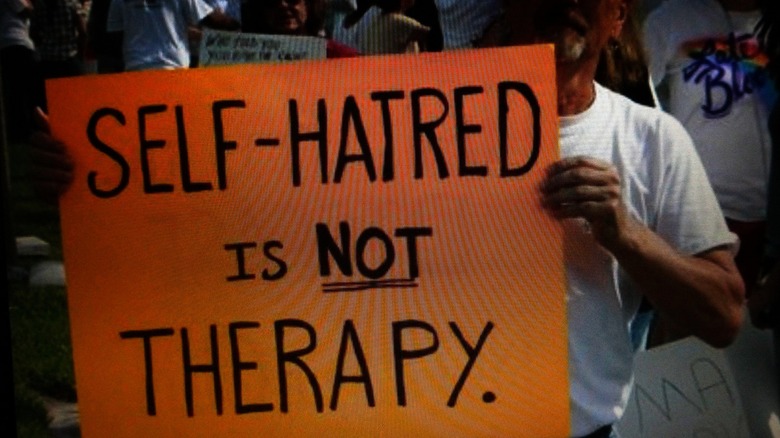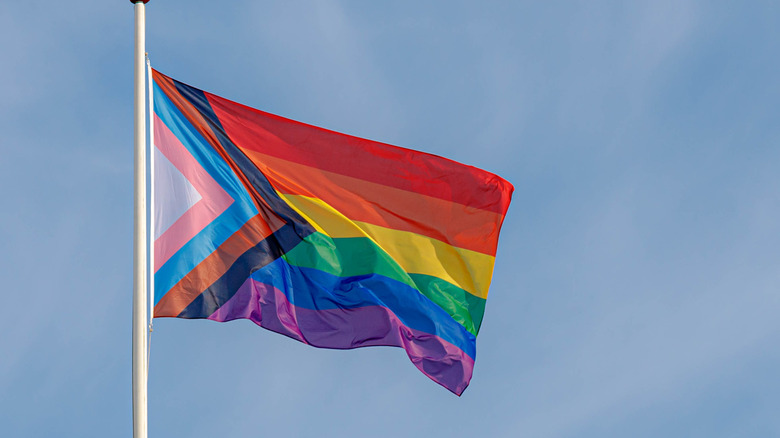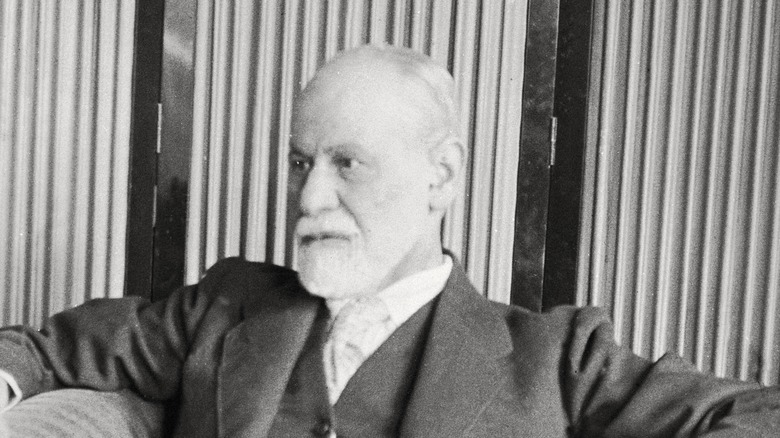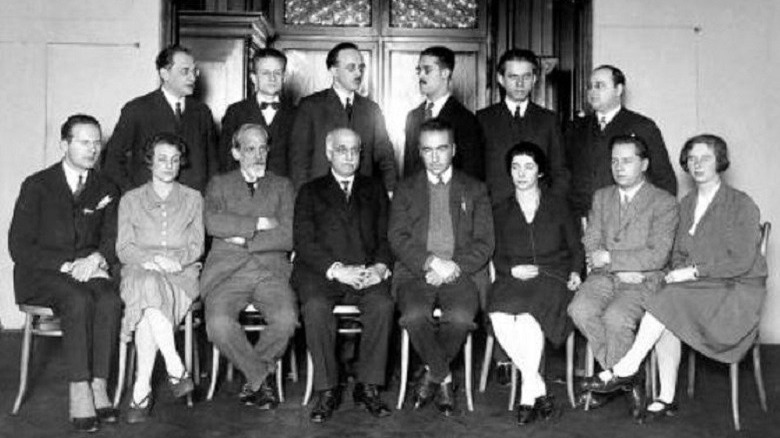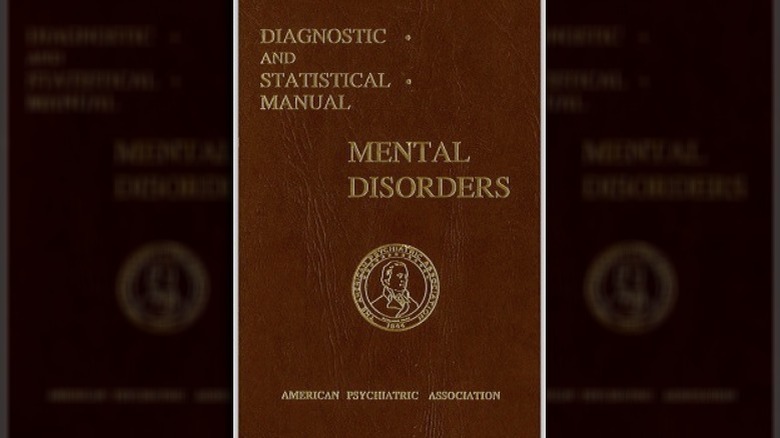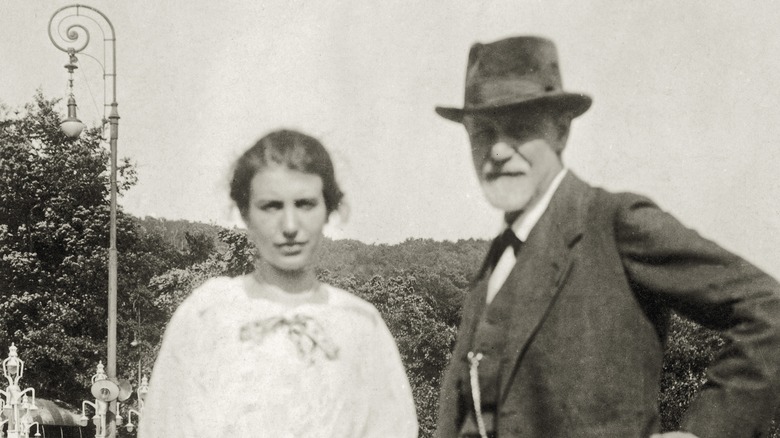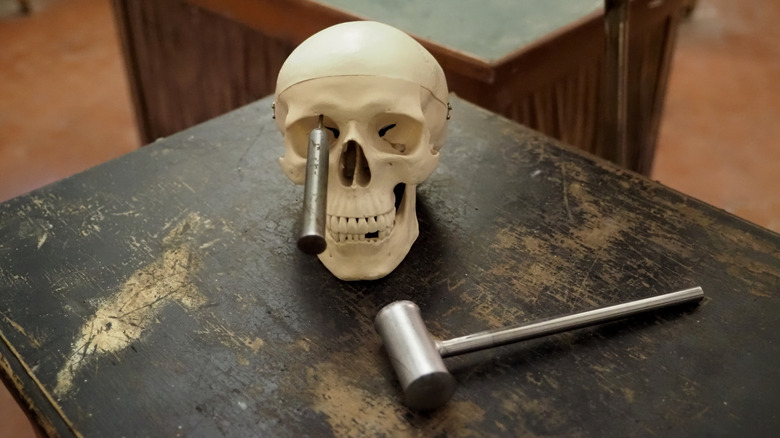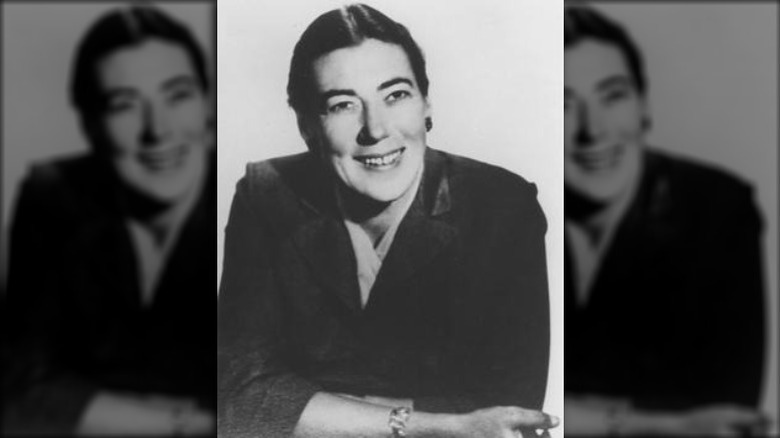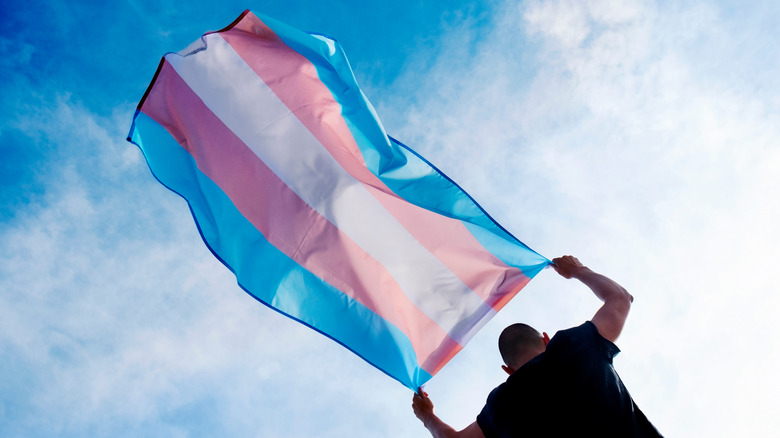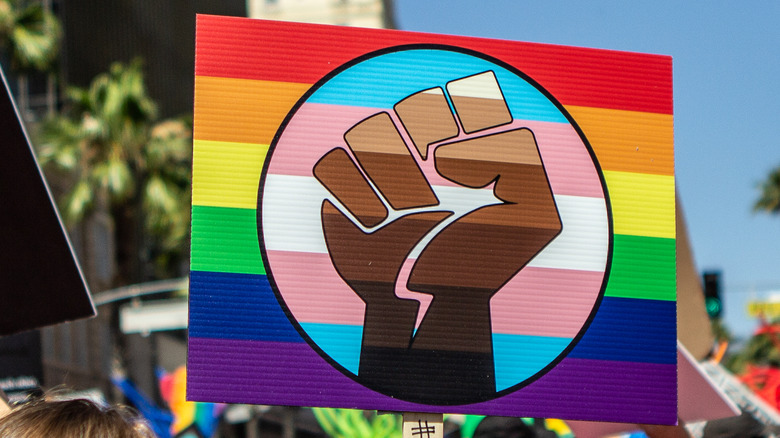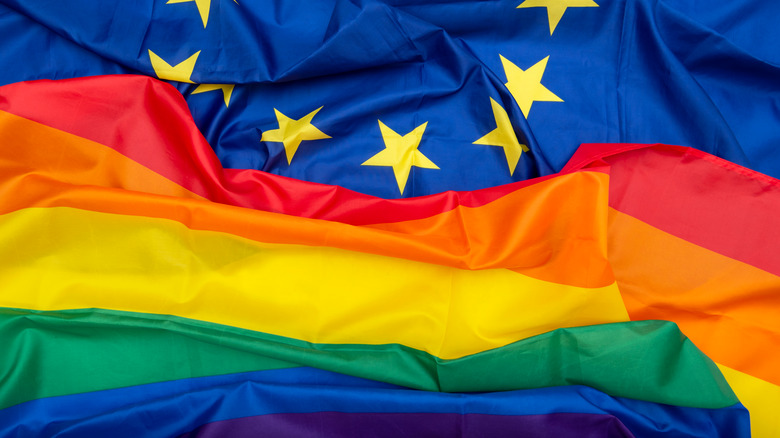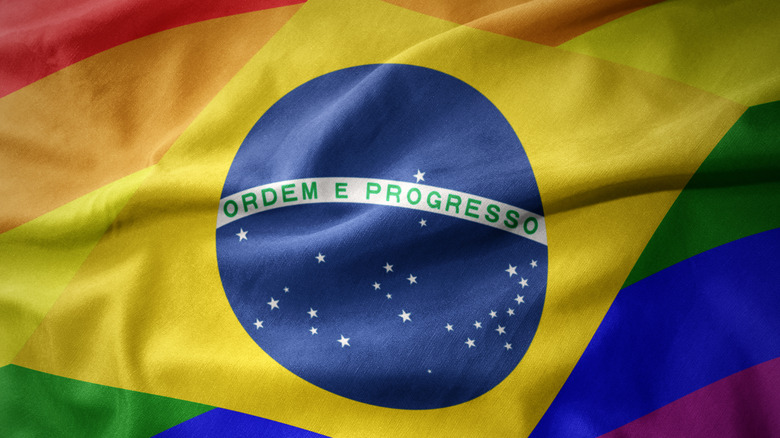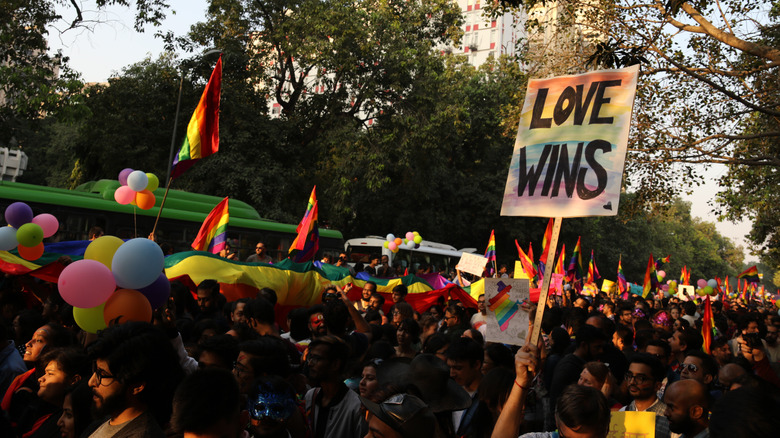The Messed Up Truth About Conversion Therapy
Although conversion therapy is widely considered to be a discredited and pseudoscientific practice and has even been denounced by some of its former practitioners, it continues to be practiced across the globe. But where did conversion therapy come from and why has it maintained such a grip on society?
Ultimately, the obsession with conversion therapy follows the belief that the world must be heteronormative and cisgender and that anything that even suggests deviation is unacceptable and wrong. And as a result, tens of thousands of people in the 20th and 21st century ended up being subjected to a series of practices aimed at making them conform to these societal expectations.
Conversion therapy practices have ranged over the years from long term therapy to surgical procedures, but there's never been any evidence that conversion therapy works. If anything, it only serves to further hurt and traumatize the individual by making them think that a part of their identity is wrong and deserves to be changed. This is the messed up truth about conversion therapy.
The following article includes references to suicide and sexual assault. If you or anyone you know has been a victim of sexual assault, help is available. Visit the Rape, Abuse & Incest National Network website or contact RAINN's National Helpline at 1-800-656-HOPE (4673). If you or anyone you know is having suicidal thoughts, please call the National Suicide Prevention Lifeline at 1-800-273-TALK (8255).
What is conversion therapy?
Conversion therapy is a practice that involves trying to change someone's gender identity or sexual orientation. Based on the false idea that identities and orientations should be changed to conform to heteronormativity and cisgenderism, throughout history this practice has also been known as "the gay cure," according to The Conversation. GLAAD writes that since coming under scrutiny, providers of conversion therapy have started using different names or vague rhetoric in an attempt to mask what they're doing. Examples include "promoting healthy sexuality," Sexual Attraction Fluidity Exploration in Therapy (SAFE-T), and "healing sexual brokenness."
But at the end of the day, there is no evidence that conversion therapy does anything but traumatize and harm those who are subjected to it. According to The American Academy of Child and Adolescent Psychiatry, there's "no evidence to support the application of any 'therapeutic intervention' operating under the premise that a specific sexual orientation, gender identity, and/or gender expression is pathological." Additionally, the AACAP notes that conversion therapies "lack scientific credibility and clinical utility."
Early versions of conversion therapy began to arise in the 19th century, when Western scientists started to classify homosexuality as "medical disorder" that could be "reversed." But in addition to targeting lesbian, gay, and bisexual people, conversion therapy is also used against intersex, transgender, and queer people.
The Freudian period
Although proponents of conversion therapy would later use Sigmund Freud's psychoanalytic views to justify conversion therapy, Freud himself wasn't an advocate of conversion therapy. According to "Homosexuality and its Vicissitudes," in his studies of human sexuality, Freud instead suggested that "a homosexual dimension of bisexuality played a fundamental role in normal human development." In 1935, Freud was even contacted by a mother who was concerned that her son was gay and was hoping to find some treatment for him. But in his response, Freud wrote that "homosexuality is assuredly no advantage, but it is nothing to be ashamed of, no vice, no degradation; it cannot be classified as an illness."
However, even though Freud didn't consider being gay or lesbian a disorder or a disease, he did question if one might be gay or lesbian as a result of "unresolved anxiety." For Freud, every person experienced bisexuality as part of their development, but the development was always towards a heterosexual lifestyle and being gay was considered for him to be an "immaturity."
Mental health workers later "latched onto this." In "Misusing Freud," Jonathan Barrett writes that Freud's views ended up being distorted as his methods of therapy were used while "ignor[ing] his conclusions on homosexuality and sexual nature itself."
Who was Edmund Bergler?
While sexologists such as Alfred C. Kinsey sought to expand our understanding of human sexuality, psychoanalysts like Edmund Bergler (pictured, standing far right) actively sought to suppress and diminish these views. "Forgotten Analysts and Their Legacy" records that Bergler was born into a Jewish family and studied psychiatry and sexual research in Vienna in the 1920s and 30s. But when the Nazis took over Austria, Bergler and his wife escaped to the United States.
In the United States, Bergler joined the New York Psychoanalytic Society. He also taught at the New York Psychoanalytic Institute for a few years in the 1940s, with courses focusing on "the treatment of homosexuality." Bergler published many books as well during his career, including "Kinsey's Myth of Female Sexuality: The Medical Facts" and "Homosexuality: Disease or Way of Life?"
According to "Kinsey and the Psychoanalysts," Bergler was convinced that homosexuality was "a pathological variation" and considering it to be stood in the way of "therapeutic intervention." Berger adamantly argued against Alfred Kinsey's theories regarding human sexuality, and even claimed that Kinsey's findings could be "politically and propagandistically used against the nation as a whole in a whisper campaign." Ultimately, Bergler asserted that Kinsey's findings were false became "normal people will [not] tell the truth about their sex life."
Homosexuality classified as a disorder
In 1952, the American Psychiatric Association (APA) published the first edition of the Diagnostic and Statistical Manual of Mental Disorders (DSM), creating for the first time a consolidated list of mental illnesses. It was in this very first edition that homosexuality was classified as a mental disorder, and it was described as a "sociopathic personality disturbance." When the second edition was published in 1968, homosexuality was reclassified as "a sexual deviation" while continuing to maintain that such sexual activity was abnormal, according to "When Gay Was Not Okay with the APA."
Following Freudian lines of thought while rejecting his actual ideas, psychoanalysts such as Irving Bieber tried to attribute homosexuality to the relationship between children and their parents, claiming that "gay men came from binding, seductive mothers and distant, hostile fathers." Bieber also justified his beliefs with medical analogies, claiming that "what you have in a homosexual adult is a person whose heterosexual function is crippled like the legs of a polio victim." Notably, Bieber didn't even consider lesbians.
By classifying homosexuality as a "sexual deviation," it gave physicians, psychologists, and psychiatrists license to try to "cure" it, writes Jack Drescher in "Out of DSM." Such a classification also played a huge role in how the general public treated gay, lesbian, and bisexual people. And because APA classification was thought to be based on "scientific findings," it made it difficult for people to try to argue that they weren't "sick" or "deviant."
Aversive Conditioning techniques
One of the most well-known forms of conversion therapy is using aversive conditioning techniques, which involves giving someone uncomfortable and/or painful stimuli while exposing them to erotic images. It's Torture Not Therapy writes that this can range from anything to nausea-inducing medication to electric shocks on the body.
According to "Sexual Orientation Conversion Therapy for Gay Men and Lesbians," a person would be exposed to the painful shocks on their hands or their genitals while being exposed to "same-sex erotic visual stimuli." The visual stimuli would also include images of the opposite sex, and when those images came up the electric shocks would cease "to supposedly strengthen heterosexual feelings in the sexual response hierarchy." This technique was later altered into being called "anticipatory avoidance conditioning," which would allow the person to avoid electric shocks even when looking at same-sex erotic images. Another version was known as "covert sensitization." This similarly tried to pair negative feelings with same-sex images, but rather than actively subject the person to electric shocks or induced vomiting, the person was told to instead imagine being shocked or vomiting when they were faced with same-sex images.
Those who practiced aversive conditioning techniques claimed that they had a "cure" rate of 58%, but few of the "cured" individuals refrained from homosexual behavior in the long-term.
Using psychoanalysis
Psychoanalysis was also popularly used as a conversion therapy technique by a number of physicians, including Irving Bieber. Most of the time, the therapy was meant to be long-term, and since it was believed that homosexuality was due to "unconscious childhood conflicts," most of the therapy centered around uncovering those conflicts. However, according to "Sexual Orientation Conversion Therapy for Gay Men and Lesbians," the methodology of psychoanalysts, including that of Bieber's, has been "widely criticized."
Although Bieber claimed that he had a 27% success rate when it came to psychoanalysis conversion therapy, he conflated gay and bisexual men in his final success rate, which ends up creating a misleading statistic. It has also been contested whether or not these were lasting results.
But one of the first people to have been subjected to psychoanalysis as a type of conversion therapy may have been Sigmund Freud's own daughter, Anna Freud. According to The Seattle Times, although Sigmund considered bisexuality for men to be normal, for women to have same-sex attractions was "both a moral death sentence and a gateway to mental illness." As a result, when Anna was 23 years old and was seemingly intimate with other women, she started meeting with her father six nights per week "to discuss her dreams and fantasies." But in the end, although they met for up to 1,000 hours, Anna went on to find a partner in Dorothy Burlingham, and they were together until Burlingham's death in 1979.
Lobotomize the gay away
When psychoanalysis and electric shocks didn't instill heteronormativity sufficiently enough, lobotomies were considered to be another option for conversion therapy. According to All That's Interesting, people were subjected to ice pick lobotomies, which were popularized by Dr. Walter Freeman in the 1950s as a method for curing any and all mental illnesses. And out of the thousands of lobotomies performed on people by Freeman, it's estimated that up to 40% were in response to homosexuality.
Since homosexual acts were illegal in many places, those who were caught ended up imprisoned. According to gay rights activist Harry Hay, after being caught the first time, the person would be sent to a county jail. After being caught a second time, the person would be sent to a state prison. There, they were given two choices for a "cure," castration or lobotomy. As a result, thousands of people ended up being "mutilated by the state." Other surgical methods included transplants of testicular tissue, hysterectomies, or hormone injections, according to The Atlantic.
But lobotomies have never been proven to change sexual orientation. "Controlling Desires" reports that one person who suffered a lobotomy in 1941 ended up experiencing a mental decline, "progressing through psychosis to dementia."
Declassifying homosexuality as a disorder
Soon after heterosexuality was classified as a mental disorder by the DSM, doctors and researchers set out to prove it wrong. One of the most influential researchers was Dr. Evelyn Hooker, whose research was pivotal towards getting homosexuality removed from the DSM. Making Gay History writes that after three years of research, in 1956, Dr. Evelyn Hooker presented the results of her study at an APA convention, demonstrating that "gay men were just as sane as straight men." But despite her findings and conclusions, it still took almost another 20 years for the classification of homosexuality to be changed.
According to The New York Times, in 1973, the APA's Board of Trustees voted to change the description of homosexuality from "psychiatric disorder" to "sexual orientation disturbance." But even with this change in descriptions, psychiatrists such as Dr. Robert L. Spitzer maintained that "in no longer considering it a psychiatric disorder, we are not saying that it is normal, or that it is as valuable as heterosexuality."
Sexual Orientation Disturbance was soon replaced by Ego Dystonic Homosexuality, but according to "Out of DSM," these changes were "the result of earlier political compromises and that neither diagnosis met the definition of a disorder in the new nosology." Ego Dystonic Homosexuality wouldn't be removed from the DSM until 1987, at which point sexual orientation was finally removed completely from the DSM.
Conversion therapy and trans people
Although sexual orientation is no longer considered to be a mental disorder by the DSM, gender identity that doesn't align with cisgenderism and causes "distress" continues to be mentioned. And according to Transgender Health, the DSM didn't include any mention of gender identity until 1980, when "transexualism" and "Gender Identity Disorder of Childhood" (GIDC) were first mentioned under the category of "sexual deviations."
In DSM-III R, gender identity was no longer listed as a "sexual deviation," and was instead considered under disorders that arise during childhood or adolescence. However, since all of these descriptions persisted in describing non-cisgenderism as a disorder, it fueled stigma and discrimination against trans people. It wouldn't be until DSM-V that gender identity was replaced with "gender dysphoria." This also became the first instance that "gender identities outside the gender binary" were seen as legitimate, since gender dysphoria is only regarded for those who "exhibit clinically significant distress or impairment associated with a perceived incongruence," rather than being applied towards all trans people.
Despite these ongoing changes, conversion therapy for trans people continues to cause harm. According to NBC News, some people are exposed to conversion therapy in early childhood, and for those who were subjected to it before the age of 10, studies show that they're "four times more likely to report lifetime suicide attempts than the general transgender population."
The state of conversion therapy in the USA
Despite the fact that all types of conversion therapy have been shown to be more harmful than beneficial, conversion therapy continues to be practiced in numerous states. According to LGBT Map, only 20 states have laws that ban conversion therapy for minors, and five states and one territory partially ban conversion therapy for minors. Partial bans can include making sure that state funds don't get used for conversion therapy. And according to Williams Institute, it's estimated that up to 57,000 LGBT youth will end up being subjected to conversion therapy across the United States before the age of 18.
The Conversation writes that conversion therapy mostly exists now in Christian communities or through Christian organizations, since "religious or faith-based practices provided by pastors or lay counselors do not fall under the auspices of professional bodies that have prohibited members from engaging in conversion therapy."
One such program was Refuge, an outpatient program run by Love In Action, where children aged 13-18 were sent. Other organizations, such as Exodus International, claim to have ex-gay programs in over 15 countries, according to Youth in the Crosshairs.
Disavowing but not banning conversion therapy
In 2016, Malta became the first European country to make conversion therapy illegal, with fines up to $10,000 and even jail time if someone tries to "change, repress, or eliminate a person's sexual orientation, gender identity, and/or gender expression," according to the BBC. The new law also maintains that "no sexual orientation, gender identity, or gender expression constitutes a disorder, disease, or shortcoming of any sort."
Two years later, in 2018, the European parliament voted 435 to 109 to call upon member states to outlaw conversion therapy. According to Pink News, this was the very first time that the European Parliament specifically disavowed conversion therapies. However, few countries have followed in creating legislation to protect LGBTQI+ people.
However, conversion therapy continues to persist across Europe. In 2020, Germany passed a law that banned conversion therapy for gender identity and sexual orientation, but the law only applies to those under the age of 18. In response, the Green Party and the Left Party called for the age to be raised to 26 and 27, respectively. DW writes that in Germany alone, at least 1,000 people are subjected to conversion therapy every year. But despite this ban, Malta remains the only European country to completely ban conversion therapy nationwide.
Back and forth on bans
In South America, Brazil and Ecuador are the only countries that impose a nationwide ban on conversion therapy. According to The Guardian, conversion therapy has been banned in Brazil since 1999, but in 2017, there was a moment when federal judge Waldemar de Carvalho overruled the 1999 ruling and allowed for conversion therapy to resume. However, the same judge ended up changing his ruling just a few months later and once more prohibited conversion therapy. The ban was soon extended to apply to conversion therapy for trans people as well.
Although Ecuador also has a ban on conversion therapy nationwide since 2014, according to Reuters, there are still instances of gay people in being forced into conversion therapy in "secret clinics where they are raped and beaten." According to Harmful Treatment, while other countries such as Chile move towards banning conversion therapy as well, many conversion therapy clinics continue to exist under the guise of being "treatment centers for prevention of suicide."
Some cities have also taken the initiative to ban conversion therapy. Mexico City approved a bill in 2020 that criminalized conversion therapy for all individuals, and News Americas Now writes that those who provide conversion therapy now risk up to five years imprisonment, with even longer sentences for those who use conversion therapy on minors.
Few bans in sight
Conversion therapy practices have been documented across many Asian countries, including Indonesia, India, China, and Malaysia. Harmful Treatment writes that in many Asian countries, there are little-to-no legal regulations protecting LBGTQI+ people, which allows conversion therapy practices to flourish. In China for example, although homosexuality was declassified as a mental disorder from the Chinese Classification of Mental Disorders in 2001, "sexual orientation disorders" is still mentioned and is used to justify "medical, psychological, or psychiatric intervention." And despite successful lawsuits against conversion therapy clinics, the clinics were only forced to pay a fine and have seen no pressure or regulation to halt the practice.
According to Nikkei Asia, in Indonesia, a bill was proposed in 2020 that would have forced LGBTQ people into conversion therapy in order to "cure" them. And the Indonesian Psychiatrists Association continues to classify homosexuality and transgenderism as mental disorders. Some websites even advertise their services as "sex therapy," though many consider it "corrective rape," according to The Jakarta Post.
In India, although organizations such as the Indian Psychiatric Society and the Indian Association for Clinical Psychologists have condemned conversion therapy practices, conversion therapy continues to be practiced. Some people, like Anjana Harish, have ended up committing suicide after being subjected to conversion therapy.
Neo-colonialist conversion therapy
While countries like the United States and the United Kingdom slowly move to ban conversion therapy within their own borders, aid organizations from both countries continue to fund conversion therapy clinics on the African continent, in countries like Kenya, Tanzania, and Uganda. Other European countries, like Spain, have also been accused of allowing aid money to fun conversion therapy in African countries. And in many African countries, laws that criminalize homosexuality were created during the colonial era and have since been maintained.
According to The Guardian, most conversion therapy clinics offered counselling as their main method of conversion therapy, but in some clinics medication was also prescribed. For example, in one clinic in Uganda, sleeping pills were given to prevent masturbation. Meanwhile, in Nigeria, according to OutRight, almost half of those surveyed admitted to having experienced some form of conversion therapy, compared to 22% of respondents for OutRight's global survey. And in countries like Egypt, Arabic-language conversion therapy content is frequently posted and advertised on Facebook, despite the fact that conversion therapy content is supposed to be banned on the social media platform, writes Reuters.
All Africa writes that in 2021, South Africa's Democratic Alliance proposed a bill that would criminalize conversion therapy for those under the age of 18.
